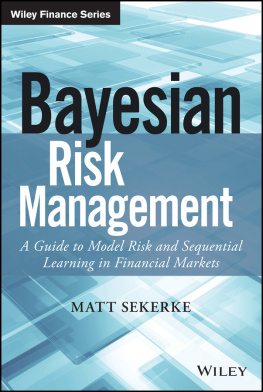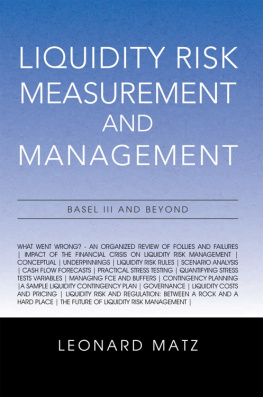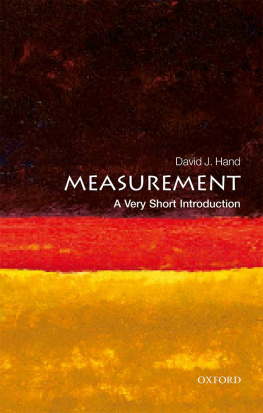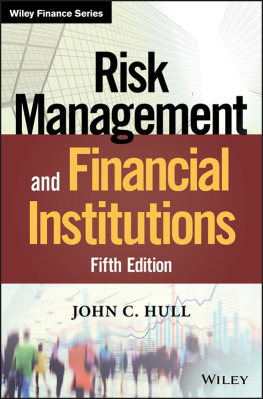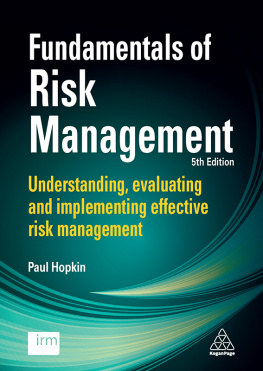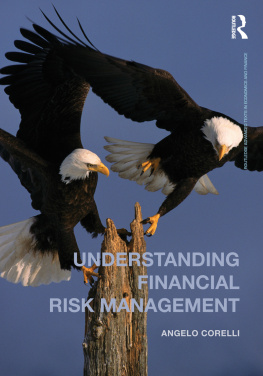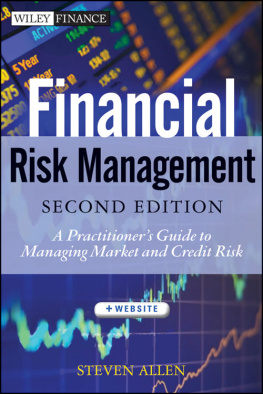Marrison - The Fundamentals of Risk Measurement
Here you can read online Marrison - The Fundamentals of Risk Measurement full text of the book (entire story) in english for free. Download pdf and epub, get meaning, cover and reviews about this ebook. City: New York, year: 2002, publisher: McGraw-Hill Education, genre: Business. Description of the work, (preface) as well as reviews are available. Best literature library LitArk.com created for fans of good reading and offers a wide selection of genres:
Romance novel
Science fiction
Adventure
Detective
Science
History
Home and family
Prose
Art
Politics
Computer
Non-fiction
Religion
Business
Children
Humor
Choose a favorite category and find really read worthwhile books. Enjoy immersion in the world of imagination, feel the emotions of the characters or learn something new for yourself, make an fascinating discovery.

- Book:The Fundamentals of Risk Measurement
- Author:
- Publisher:McGraw-Hill Education
- Genre:
- Year:2002
- City:New York
- Rating:5 / 5
- Favourites:Add to favourites
- Your mark:
- 100
- 1
- 2
- 3
- 4
- 5
The Fundamentals of Risk Measurement: summary, description and annotation
We offer to read an annotation, description, summary or preface (depends on what the author of the book "The Fundamentals of Risk Measurement" wrote himself). If you haven't found the necessary information about the book — write in the comments, we will try to find it.
The Fundamentals of Risk Measurement — read online for free the complete book (whole text) full work
Below is the text of the book, divided by pages. System saving the place of the last page read, allows you to conveniently read the book "The Fundamentals of Risk Measurement" online for free, without having to search again every time where you left off. Put a bookmark, and you can go to the page where you finished reading at any time.
Font size:
Interval:
Bookmark:
THE FUNDAMENTALS OF RISK MEASUREMENT
CHRIS MARRISON, PH.D


Copyright 2002 by The McGraw-Hill Companies, Inc. All rights reserved. Except as permitted under the United States Copyright Act of 1976, no part of this publication may be reproduced or distributed in any form or by any means, or stored in a database or retrieval system, without the prior written permission of the publisher.
ISBN: 978-0-07-173688-6
MHID: 0-07-173688-3
The material in this eBook also appears in the print version of this title: ISBN: 978-0-07-138627-2, MHID: 0-07-138627-0.
All trademarks are trademarks of their respective owners. Rather than put a trademark symbol after every occurrence of a trademarked name, we use names in an editorial fashion only, and to the benefit of the trademark owner, with no intention of infringement of the trademark. Where such designations appear in this book, they have been printed with initial caps.
McGraw-Hill eBooks are available at special quantity discounts to use as premiums and sales promotions, or for use in corporate training programs. To contact a representative please e-mail us at bulksales@mcgraw-hill.com.
This publication is designed to provide accurate and authoritative information in regard to the subject matter covered. It is sold with the understanding that the publisher is not engaged in rendering legal, accounting, or other professional service. If legal advice or other expert assistance is required, the services of a competent professional person should be sought.
From a declaration of principles jointly adopted by a committee of the American Bar Association and a committee of publishers.
TERMS OF USE
This is a copyrighted work and The McGraw-Hill Companies, Inc. (McGraw-Hill) and its licensors reserve all rights in and to the work. Use of this work is subject to these terms. Except as permitted under the Copyright Act of 1976 and the right to store and retrieve one copy of the work, you may not decompile, disassemble, reverse engineer, reproduce, modify, create derivative works based upon, transmit, distribute, disseminate, sell, publish or sublicense the work or any part of it without McGraw-Hills prior consent. You may use the work for your own noncommercial and personal use; any other use of the work is strictly prohibited. Your right to use the work may be terminated if you fail to comply with these terms.
THE WORK IS PROVIDED AS IS. McGRAW-HILL AND ITS LICENSORS MAKE NO GUARANTEES OR WARRANTIES AS TO THE ACCURACY, ADEQUACY OR COMPLETENESS OF OR RESULTS TO BE OBTAINED FROM USING THE WORK, INCLUDING ANY INFORMATION THAT CAN BE ACCESSED THROUGH THE WORK VIA HYPERLINK OR OTHERWISE, AND EXPRESSLY DISCLAIM ANY WARRANTY, EXPRESS OR IMPLIED, INCLUDING BUT NOT LIMITED TO IMPLIED WARRANTIES OF MERCHANTABILITY OR FITNESS FOR A PARTICULAR PURPOSE. McGraw-Hill and its licensors do not warrant or guarantee that the functions contained in the work will meet your requirements or that its operation will be uninterrupted or error free. Neither McGraw-Hill nor its licensors shall be liable to you or anyone else for any inaccuracy, error or omission, regardless of cause, in the work or for any damages resulting there from. McGraw-Hill has no responsibility for the content of any information accessed through the work. Under no circumstances shall McGraw-Hill and/or its licensors be liable for any indirect, incidental, special, punitive, consequential or similar damages that result from the use of or inability to use the work, even if any of them has been advised of the possibility of such damages. This limitation of liability shall apply to any claim or cause whatsoever whether such claim or cause arises in contract, tort or otherwise.
Over the last decade, the understanding of risk measurement has become increasingly important as most international banks have adopted Value-at-Risk, economic capital, and risk-adjusted return on capital (RAROC) to control and price their risks. They use these tools to find the loans, trades, and deals that are most profitable, leaving the unprofitable ones for their less sophisticated competitors. The understanding of risk measurement is therefore vital to those who want to manage a bank safely and profitably.
The importance of these risk measurement tools has been greatly magnified by regulators, such as the Federal Reserve and the Bank of England, who plan to start using these concepts to calculate the minimum amount of capital that banks must hold. For competitive and regulatory reasons, it is now necessary for all banks to have a sound risk-measurement framework.
This book was written to address the growing need for easy-to-understand information about how banks can apply effective risk measurement techniques. The goals of this book are the following:
Provide quick access to the whys and hows of risk measurement.
Provide easy-to-understand information, including equations and examples, that can be quickly applied to most risk measurement problems.
Provide information about how risk measurement is used in the management of risk and profitability.
This is a textbook to teach you how to measure risk. The book assumes that you have a general background in science, economics, or finance, and now have a need to quickly understand the field of financial risk analysis. Alternatively you may already have a good understanding of one area of risk but now seek to have an integrated understanding across all types.
The book is deliberately compact so it can be read and understood quickly. It includes background chapters for those unfamiliar with finance and statistics, and includes descriptions of the many techniques that are commonly used in risk measurement. It applies these techniques to the four major risks faced by banks: market risk, credit risk, asset liability mismatch, and operating risk.
The book begins with chapters describing how banks make, and often lose, money. It then describes the two fundamental building blocks of integrated risk measurement: economic capital and RAROC. reviews the statistical relationships that are commonly used in risk measurement and provides reference material for the rest of the book. It is useful for those readers who do not have a recent working knowledge of statistics.
Market risks arise when the perceived value of an investment falls and is most closely associated with trading operations. The measurement of market risks is covered in gives an overview of the main traded instruments and how they can be valued. This chapter is useful for those readers who are new to the finance industry.
the VaR contribution methodology is used to pinpoint the source of a portfolios risk.
Regulators allow banks to use their VaR caculators to set the amount of capital that they hold against market risks. also extends VaR to measure the risk of asset management operations.
Although VaR is the best single metric for market risks, it has several limitations. These limitations, and typical solutions, are discussed in the market risk section concludes by describing how the results of risk measurement are used in risk management, including the procedure for setting VaR limits.
describes how those risks arise and the risk characteristics of different types of deposits and loans.
The measurement of interest rate risk and liquidity risk for ALM is discussed in , including gap reports, rate shift scenarios, simulations, and models of customer behaviour.
Next pageFont size:
Interval:
Bookmark:
Similar books «The Fundamentals of Risk Measurement»
Look at similar books to The Fundamentals of Risk Measurement. We have selected literature similar in name and meaning in the hope of providing readers with more options to find new, interesting, not yet read works.
Discussion, reviews of the book The Fundamentals of Risk Measurement and just readers' own opinions. Leave your comments, write what you think about the work, its meaning or the main characters. Specify what exactly you liked and what you didn't like, and why you think so.

